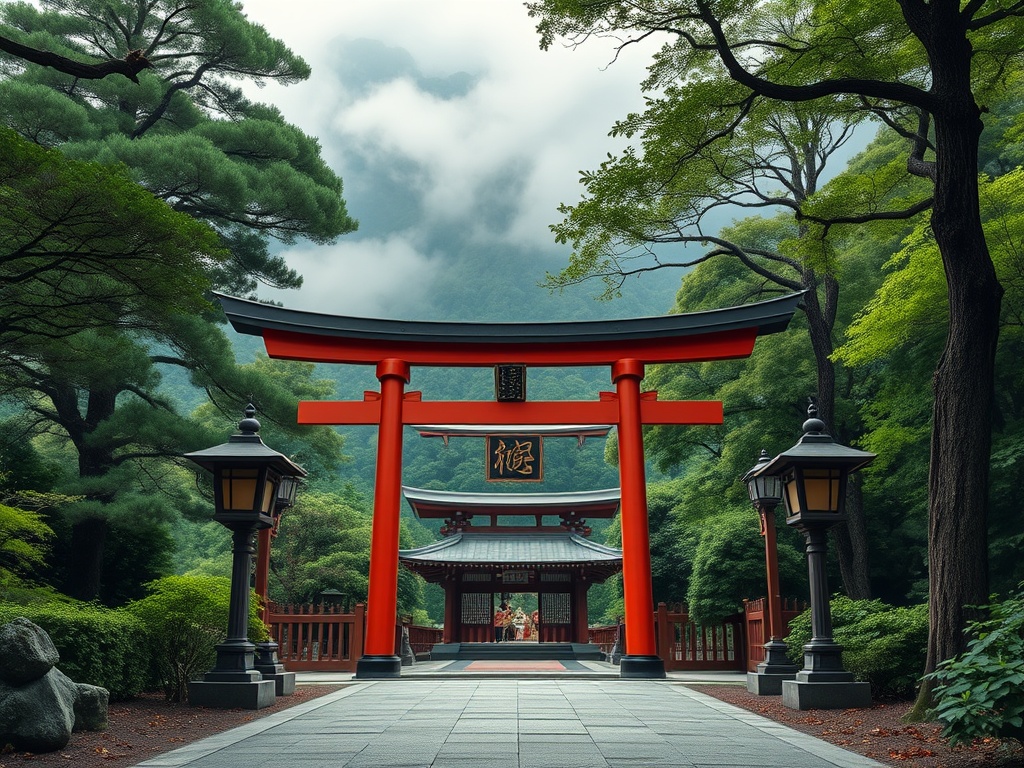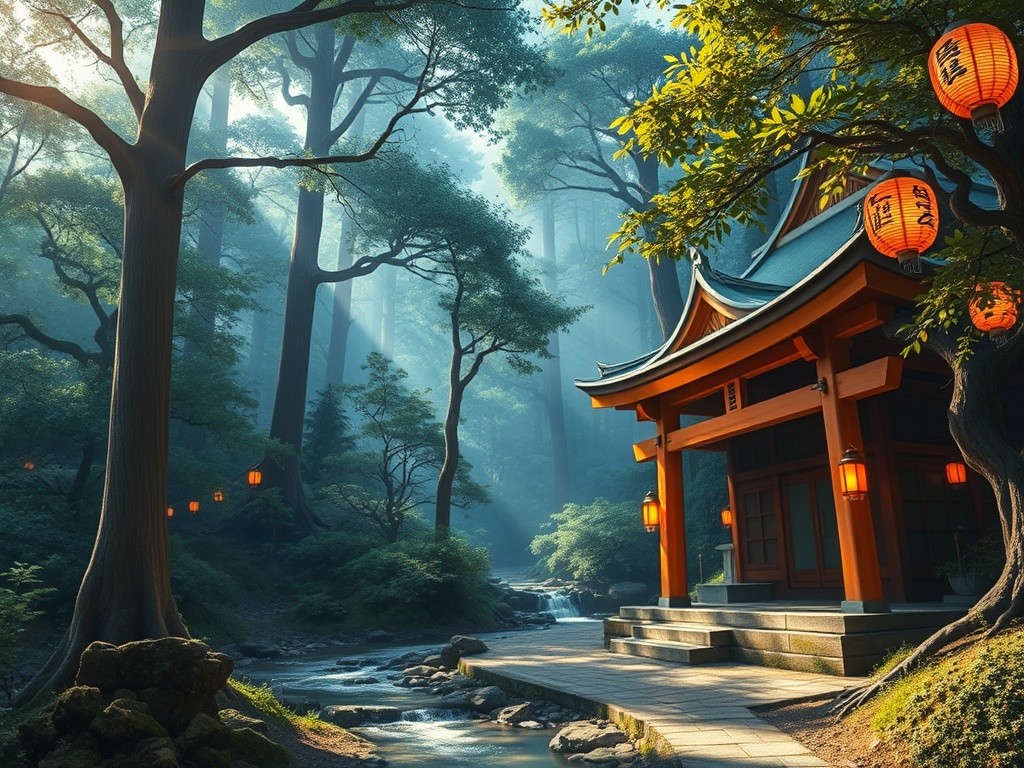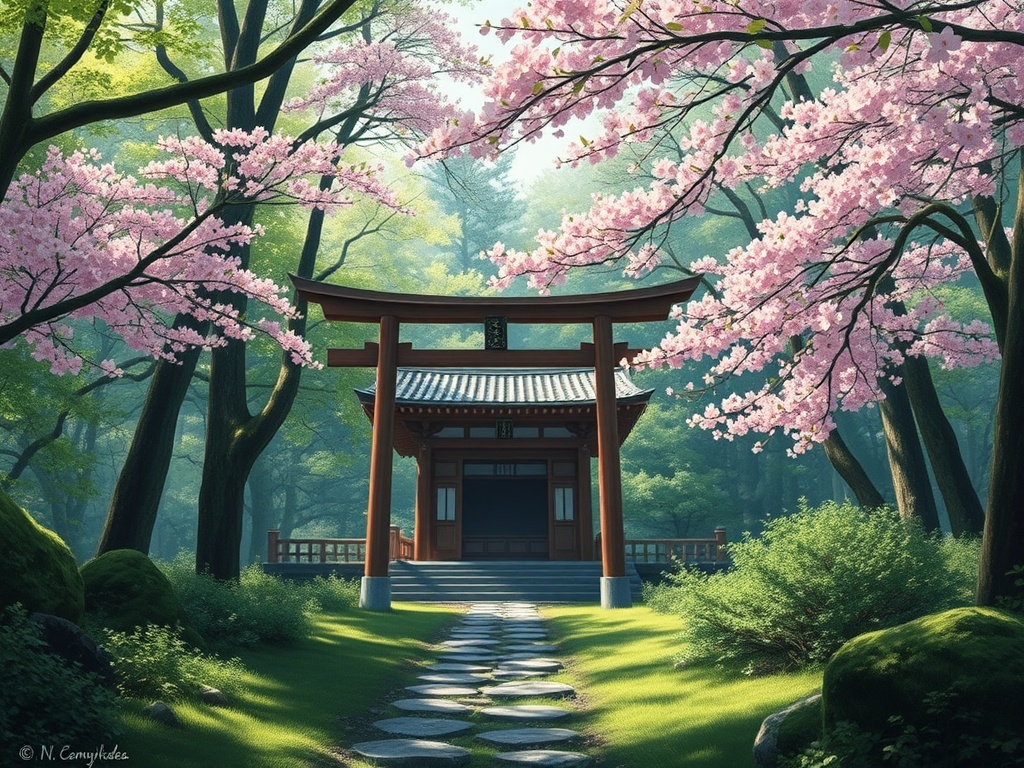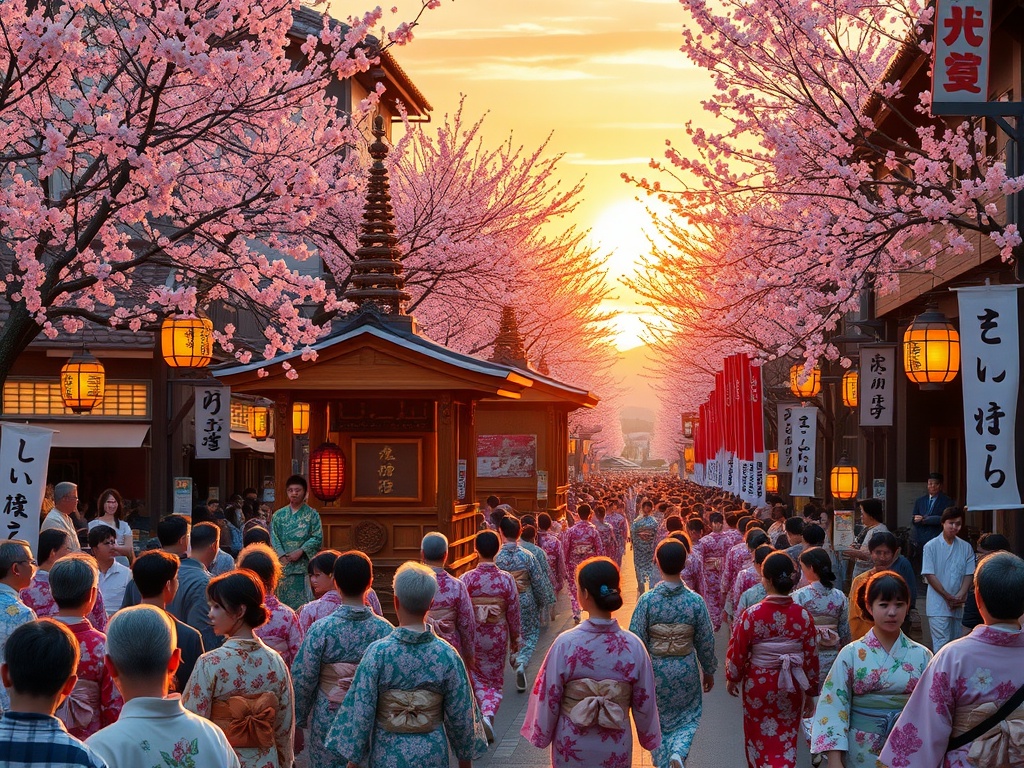Unveiling the Mystical World of Japanese Kami: A Traveler’s Guide
Win a Free Trip to Japan!
Experience cherry blossoms and ancient temples
Embark on a captivating journey through Japan’s mystical realm where ancient traditions and spiritual beliefs converge. The world of kami, the revered spirits and deities of Shintoism, is woven into the fabric of Japanese culture. From sacred mountains to tranquil shrines, this guide will illuminate the spiritual landscape that beckons travelers from across the globe.
In Japan, shrines and temples are not just places of worship; they are gateways to the divine. As you wander through these hallowed grounds, you’ll encounter majestic torii gates, serene gardens, and intricate wooden structures that stand as a testament to centuries-old craftsmanship. Here are some must-visit locations:
- Fushimi Inari Taisha: Renowned for its thousands of vibrant red torii gates, this shrine is dedicated to Inari, the kami of rice and prosperity.
- Itsukushima Shrine: A UNESCO World Heritage Site, famous for its floating torii gate on the island of Miyajima.
- Todai-ji Temple: Home to the Great Buddha, this iconic temple offers a glimpse into the rich Buddhist traditions of Japan.
The concept of kami is central to Shinto beliefs, representing a wide spectrum of entities from natural phenomena to ancestral spirits. Understanding the nuances of these deities can deepen your appreciation of Japanese culture. Kami are not confined to a single form; they embody the mountains, rivers, and even the wind. They are believed to influence the natural and human world, providing protection, guidance, and harmony.
| Kami | Description |
|---|---|
| Amaterasu | The sun goddess and one of the principal Shinto deities. |
| Susanoo | The storm god, known for his wild temperament. |
| Tsukuyomi | The moon god, often depicted as calm and composed. |
Sacred Spaces: Exploring Shrines and Temples Dedicated to Kami
For travelers seeking to delve into the mystical world of Japanese kami, the journey through sacred spaces such as shrines and temples offers an unparalleled experience. These spiritual sanctuaries are not just places of worship, but also profound gateways that connect the physical world with the divine. Each shrine and temple tells a unique story, offering a glimpse into the rich tapestry of beliefs that have shaped Japan’s cultural and spiritual landscape.
The landscapes of Japan are dotted with shrines and temples, each dedicated to specific kami and imbued with a sense of timelessness. As you explore these sacred spaces, you’ll find yourself walking through corridors of history, where every structure and ornament is a testament to centuries of devotion. The serene atmosphere invites contemplation and reflection, allowing visitors to connect with the spiritual essence of the location.
Many shrines and temples are situated in harmony with nature, emphasizing the Shinto belief in the sacredness of the natural world. The presence of kami is often felt in the rustling leaves, the gentle sway of the torii gates, and the tranquil flow of water. This symbiotic relationship highlights the belief that kami dwell within the elements of nature, offering protection and blessings to those who pay their respects.
Visitors to these sacred spaces are encouraged to participate in traditional rituals, which include purifying oneself at the temizuya (water basin) and offering a prayer at the main altar. These practices not only honor the kami but also allow travelers to immerse themselves in the spiritual customs that have been cherished for generations. In doing so, one can gain a deeper appreciation for the intricate balance between humanity and the divine.
Rituals and Festivals: Experiencing the Spirit of Kami Celebrations
Delving into the vibrant heart of Japan’s spiritual traditions, rituals and festivals provide a window into the dynamic relationship between the people and the kami. These celebrations are not merely events on a calendar, but rather living expressions of centuries-old beliefs that continue to thrive in modern society. As colorful processions sweep through the streets and solemn ceremonies unfold at ancient shrines, travelers are invited to partake in the joyous reverence that defines these sacred occasions.
Japan’s festivals, known as matsuri, are deeply intertwined with the cycles of nature and agricultural traditions. Each season brings with it a unique festival, reflecting the intrinsic connection between the kami and the natural world. During spring, the Sakura Matsuri celebrates the ephemeral beauty of cherry blossoms, inviting people to reflect on the fleeting nature of life. In contrast, autumn’s Shichi-Go-San honors children, marking their growth and well-being under the watchful eyes of the kami. These festivals offer travelers a chance to witness the harmonious blend of cultural festivities and spiritual devotion, as communities gather to express gratitude and seek blessings for the future.
Engaging in the rituals that accompany these festivals is an opportunity for travelers to immerse themselves in the spiritual life of Japan. Traditionally, visitors are welcome to join in the purification rites, such as the sprinkling of water or scattering of salt, which serve to cleanse the body and spirit. These acts are followed by offerings of food and drink to the kami, symbolizing the mutual respect and exchange between humans and the divine. By participating in these customs, travelers can gain a deeper understanding of the spiritual fabric that binds Japanese society, all while experiencing the joy and camaraderie that these celebrations bring.
Nature’s Guardians: Discover the Kami of Mountains, Rivers, and Forests
The mystical allure of Japan’s natural landscapes is deeply rooted in the sacred presence of kami, the spiritual guardians believed to inhabit these environments. Travelers venturing into the verdant forests, majestic mountains, and serene rivers of Japan are not merely exploring scenic vistas; they are entering a realm where the divine and natural world coexist in harmony. This journey is an invitation to experience the profound spiritual connection that has been a cornerstone of Japanese culture for centuries.
Mountains in Japan are often seen as sacred spaces, revered as the dwelling places of powerful kami. These towering peaks are not just natural wonders but are also perceived as spiritual beacons, drawing pilgrims and travelers seeking enlightenment. Among these, Mount Fuji stands as an iconic symbol, revered as a kami itself, embodying the spirit of endurance and majesty. Climbing this sacred mountain is not just a physical challenge but a spiritual pilgrimage, offering an opportunity to connect with the divine presence that has inspired countless generations.
In the northern regions, the Dewa Sanzan, a trio of sacred mountains, invites explorers to embark on a journey of spiritual renewal. Each peak represents a different aspect of life: birth, death, and rebirth, encapsulating the Shinto belief in the cyclical nature of existence. These mountains are dotted with shrines and temples where visitors can engage in rituals honoring the kami, forging a deeper connection with the natural and spiritual world.
The rivers and forests of Japan are teeming with the life-giving energy of the kami. Flowing waters are often considered sacred, their gentle currents believed to be infused with the essence of the divine. The Kamo River in Kyoto is one such place, where the presence of kami is celebrated through vibrant festivals and rituals, drawing locals and tourists alike to its banks.
Forests, meanwhile, are seen as living sanctuaries where the kami reside, nurturing the land and its inhabitants. The ancient cedar trees of the Yakushima Island are revered as spiritual entities, their towering presence a testament to the kami’s enduring influence. Walking through these lush landscapes is a meditative experience, allowing travelers to absorb the tranquility and spiritual energy that permeates the air.
The journey through Japan’s natural sanctuaries offers a unique opportunity to witness the harmonious interplay between the kami and the elements. As you immerse yourself in these sacred spaces, let the presence of the kami guide your exploration, offering insights into the profound relationship between humanity and nature.
The Art of Kami Worship: Understanding Traditions and Practices
As travelers venture deeper into the spiritual heart of Japan, understanding the intricate tapestry of kami worship becomes essential. This practice is not merely an ancient ritual but a living tradition that continues to shape the lives and beliefs of the Japanese people. By exploring the customs and ceremonies associated with kami, visitors can gain a profound appreciation for the unique blend of spirituality and culture that defines this fascinating country.
Central to the worship of kami is a series of rituals that have been preserved through generations. These practices are often performed at shrines and involve acts of purification, offerings, and prayers. Visitors are encouraged to participate in these rituals, beginning with the cleansing of hands and mouth at the temizuya to purify the body and spirit before approaching the sacred space. This act of purification is a symbolic gesture that prepares one to engage with the divine.
Once purified, devotees approach the shrine to offer their prayers. The act of clapping hands twice, bowing deeply, and then clapping once more is a traditional way to call upon the kami, showing respect and gratitude. Such rituals are not only acts of devotion but also opportunities for personal reflection and connection with the spiritual world. Participating in these customs allows travelers to experience the essence of Japanese spirituality, where the boundaries between the human and divine are gracefully blurred.
Beyond daily rituals, the worship of kami is vibrantly expressed through Japan’s myriad of festivals. These celebrations are infused with spiritual significance, each designed to honor specific kami and the natural cycles they govern. From the grandeur of the Gion Matsuri in Kyoto to the lively Awa Odori in Tokushima, these events offer a kaleidoscope of colors, sounds, and emotions that reflect the deep-rooted connection between the community and the divine.
During these festivals, visitors are often invited to join in the revelry, witnessing sacred dances, traditional music, and seasonal rituals. Engaging with these festivities provides a unique window into the communal aspect of kami worship, where the divine is celebrated with joy and unity. Travelers will find that through these experiences, they can connect not only with the spiritual world but also with the cultural heartbeat of Japan.
Kami in Modern Japan: How Ancient Spirits Influence Contemporary Life
In the vibrant tapestry of modern Japan, the ancient spirits known as kami continue to exert a profound influence, weaving their presence into the very fabric of contemporary life. These spiritual entities, once confined to the realms of myth and legend, have found a unique place in the heart of Japan’s bustling cities and technological landscapes. Travelers eager to explore this fascinating intersection of tradition and modernity will discover a nation where the past and present harmoniously coexist, with kami playing a pivotal role in shaping cultural identity.
Amidst the towering skyscrapers and neon-lit streets of urban Japan, the influence of kami can be seen in the resurgence of spiritual practices. Many city dwellers turn to ancient Shinto rituals for solace and guidance, finding comfort in traditions that have stood the test of time. This renewed interest is reflected in the increasing popularity of shrine visits, where individuals seek the blessings of kami for everything from business success to personal well-being. The presence of kami is not limited to rural shrines; it is felt in the urban sanctuaries where people gather to reconnect with their spiritual roots.
Japan’s rich cultural tapestry is intricately woven with the legacy of kami, influencing everything from art and literature to popular media. In the world of entertainment, kami-inspired themes are prevalent in anime and film, where these ancient spirits are reimagined as characters that resonate with both traditional and modern audiences. This cultural fusion extends to the culinary arts, where offerings to kami inspire dishes that celebrate the bounty of nature. The enduring presence of kami in contemporary culture serves as a testament to their lasting impact on Japanese society, offering travelers a window into the spiritual undercurrents that shape everyday life.



